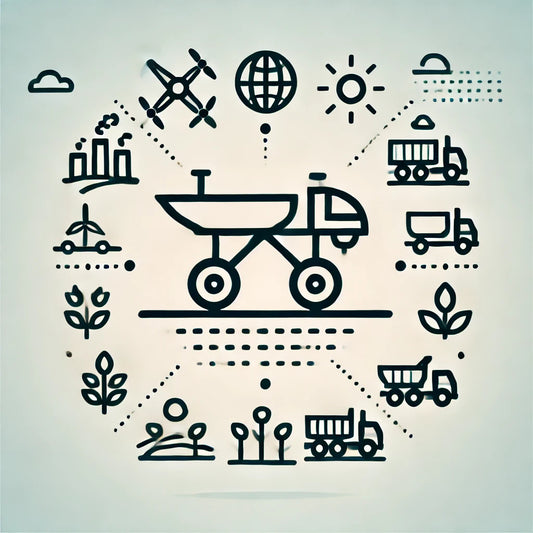-
DESCRIPTION
-
TABLE OF CONTENTS
-
SAMPLE PAGE
-
SAMPLE DOSSIER
In the evolving technological innovation landscape, Unmanned Ground Vehicles (UGVs) represent a significant leap forward. Initially conceived for military purposes, UGVs have transcended their original scope, permeating various commercial sectors. These autonomous systems, equipped with sophisticated sensors and artificial intelligence (AI), redefine traditional operations across industries, from agriculture to logistics. The financial implications of UGVs are profound, offering both challenges and opportunities for investment, cost-saving, and revenue generation.
This report delves into the financial aspects of UGVs, providing an analytical framework for understanding their economic impact. The study encompasses various industries, assessing how UGVs can streamline operations, enhance productivity, and impact labor markets. By examining current market trends, the report aims to forecast the future trajectory of UGV investments and the potential return on these investments. It also scrutinizes the cost implications of developing, deploying, and maintaining UGVs.
Chapter I. Introduction 5
A. Background on Unmanned Ground Vehicles (UGVs) 6
B. Significance and Scope of the Report 8
C. Purpose and Objectives of the Report 10
Chapter II. Historical Development and Current State of UGVs 12
A. Evolution of UGVs: From Early Prototypes to Modern Systems 14
B. Overview of Existing UGV Technologies and Capabilities 16
C. Applications and Industries Benefiting from UGVs 18
Chapter III. Technological Advancements and Trends 20
A. Autonomy and Artificial Intelligence in UGVs 23
B. Sensor Technologies and Perception Systems 25
C. Mobility and Locomotion Innovations 28
D. Communication and Networking Capabilities 31
Chapter IV. Military Applications of UGVs 33
A. Role of UGVs in Modern Military Operations 36
B. Surveillance and Reconnaissance Capabilities 39
C. Logistics and Supply Chain Support 42
D. UGVs in Combat and Force Protection 44
Chapter V. Industrial and Commercial Use of UGVs 47
A. Agriculture and Farming Applications 50
B. Mining and Construction Industry Applications 53
C. Logistics and Transportation Sector Applications 56
Chapter VI. UGVs in Disaster Response and Emergency Services 59
A. UGVs in Search and Rescue Operations 62
B. Damage Assessment and Hazardous Environment Tasks 65
C. Integration with Emergency Services and Infrastructure 68
Chapter VII. UGVs in Urban Environments 71
A. Urban Transportation and Mobility Solutions 74
B. Surveillance and Security Applications 77
C. Infrastructure Maintenance and Inspections 80
Chapter VIII. Collaborative Swarms and Multi-Robot Systems 83
A. Concept and Advantages of UGV Swarms 86
B. Coordination and Communication Algorithms 89
C. Applications of UGV Swarms in Various Domains 91
Chapter IX. Human-Robot Interaction and Ethical Considerations 94
A. Enhancing HRI in UGVs: Command, Gesture, and Language Recognition 97
B. Emotional Intelligence and Empathy in UGVs 99
C. Ethical and Legal Implications of UGV Deployment 102
Chapter X. Conclusion and Future Outlook 105
A. Recap of Key Findings and Contributions 108
B. Anticipated Technological Advancements and Challenges 110
C. Potential Impact of UGVs on Society and Industries 113
D. Recommendations for Further Research and Development 116
Notes and Resources 119





